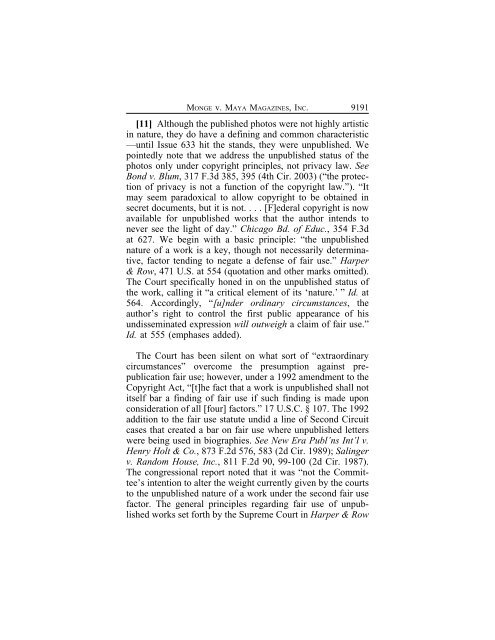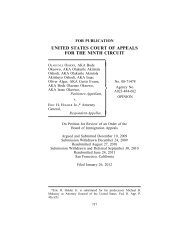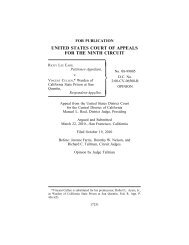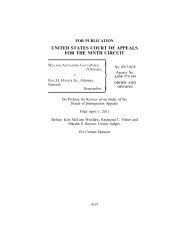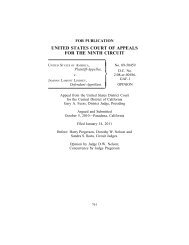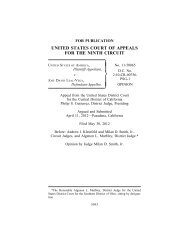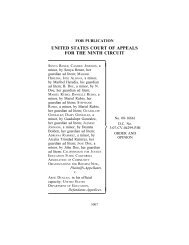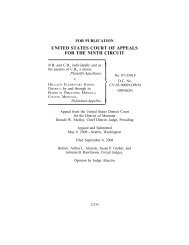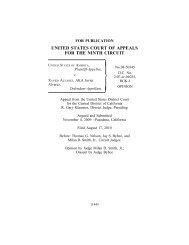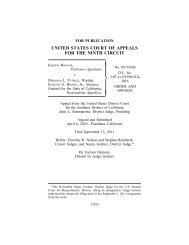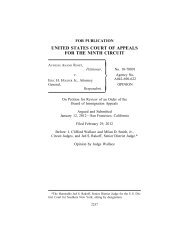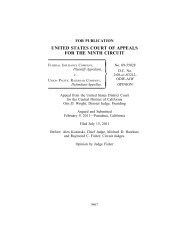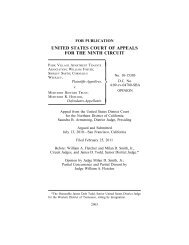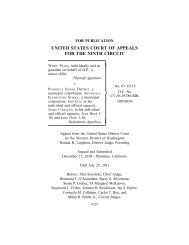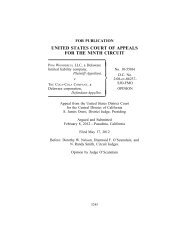NOELIA MONGE V. MAYA MAGAZINES, INC. - Ninth Circuit Court of ...
NOELIA MONGE V. MAYA MAGAZINES, INC. - Ninth Circuit Court of ...
NOELIA MONGE V. MAYA MAGAZINES, INC. - Ninth Circuit Court of ...
You also want an ePaper? Increase the reach of your titles
YUMPU automatically turns print PDFs into web optimized ePapers that Google loves.
<strong>MONGE</strong> v. <strong>MAYA</strong> <strong>MAGAZINES</strong>, <strong>INC</strong>.<br />
9191<br />
[11] Although the published photos were not highly artistic<br />
in nature, they do have a defining and common characteristic<br />
—until Issue 633 hit the stands, they were unpublished. We<br />
pointedly note that we address the unpublished status <strong>of</strong> the<br />
photos only under copyright principles, not privacy law. See<br />
Bond v. Blum, 317 F.3d 385, 395 (4th Cir. 2003) (“the protection<br />
<strong>of</strong> privacy is not a function <strong>of</strong> the copyright law.”). “It<br />
may seem paradoxical to allow copyright to be obtained in<br />
secret documents, but it is not. . . . [F]ederal copyright is now<br />
available for unpublished works that the author intends to<br />
never see the light <strong>of</strong> day.” Chicago Bd. <strong>of</strong> Educ., 354 F.3d<br />
at 627. We begin with a basic principle: “the unpublished<br />
nature <strong>of</strong> a work is a key, though not necessarily determinative,<br />
factor tending to negate a defense <strong>of</strong> fair use.” Harper<br />
& Row, 471 U.S. at 554 (quotation and other marks omitted).<br />
The <strong>Court</strong> specifically honed in on the unpublished status <strong>of</strong><br />
the work, calling it “a critical element <strong>of</strong> its ‘nature.’ ” Id. at<br />
564. Accordingly, “[u]nder ordinary circumstances, the<br />
author’s right to control the first public appearance <strong>of</strong> his<br />
undisseminated expression will outweigh a claim <strong>of</strong> fair use.”<br />
Id. at 555 (emphases added).<br />
The <strong>Court</strong> has been silent on what sort <strong>of</strong> “extraordinary<br />
circumstances” overcome the presumption against prepublication<br />
fair use; however, under a 1992 amendment to the<br />
Copyright Act, “[t]he fact that a work is unpublished shall not<br />
itself bar a finding <strong>of</strong> fair use if such finding is made upon<br />
consideration <strong>of</strong> all [four] factors.” 17 U.S.C. § 107. The 1992<br />
addition to the fair use statute undid a line <strong>of</strong> Second <strong>Circuit</strong><br />
cases that created a bar on fair use where unpublished letters<br />
were being used in biographies. See New Era Publ’ns Int’l v.<br />
Henry Holt & Co., 873 F.2d 576, 583 (2d Cir. 1989); Salinger<br />
v. Random House, Inc., 811 F.2d 90, 99-100 (2d Cir. 1987).<br />
The congressional report noted that it was “not the Committee’s<br />
intention to alter the weight currently given by the courts<br />
to the unpublished nature <strong>of</strong> a work under the second fair use<br />
factor. The general principles regarding fair use <strong>of</strong> unpublished<br />
works set forth by the Supreme <strong>Court</strong> in Harper & Row


